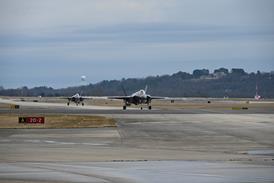Biometrics are beginning to take the hassle out of travel for some frequent US travellers, but only on a limited basis for now
The USA is slowly moving toward widespread use of biometrics for security, largely because Congress is pushing it there. In the first domestic passenger application, the Transportation Security Administration (TSA) this year is launching trials of a biometric identifier as part of a so-called Registered Traveller programme that lets pre-screened frequent flyers bypass long security lines at airports.
The programme, called Trusted Traveller plan when it was proposed after the 2001 attacks, does not exempt members from basic screening but gives them a separate lane, where it is assumed they will be able to move more quickly than in the general lanes that are clogged with first-time flyers and those unfamiliar with the procedure. Because the registered travellers are exempt from the intensified screening under which some passengers are delayed, its lines should also move more quickly.
The TSA had resisted the programme for almost two years, claiming that it would create an elite class of preferred flyers. Some at TSA also feared that a "sleeper" terrorist could establish an identity and enter the programme, although the required background checks make that unlikely. But Congress, facing pressures from constituents who had suffered through longer and longer airport check-in queues, ordered the agency to test the plan. Under the test, airlines invited some of their most frequent flyers at five airports to apply. If they agreed, they underwent background checks and supplied a fingerprint and an iris scan that is embedded in a smart card. The card is then scanned at the Registered Traveller security lane, the first of which was set up in July at Minneapolis/St Paul for Northwest Airlines passengers.
In its first days, the lane cut several minutes off processing times. One of the first to sign was Republican Jim Oberstar, a Congressional authority on aviation who represents a Minnesota district and who travels often through the airport. Over the summer, registered traveller lanes were to be set up at Houston Bush for Continental Airlines passengers, for United Airlines passengers at Los Angeles International and, in co-operation with American Airlines, at both Boston Logan and Washington National airports.
The 90-day trials, conducted with TSA contractors EDS and the Daon unit of Unisys, each cover about 2,000 travellers and could lead to the permanent adoption of the programme, which was the Congressional intent. The scope for the plan is massive, with airlines in the USA carrying about 70 million frequent flyers.
Implementation
Robert Poole of the Reason Foundation thinktank - a frequent observer on security issues - is heartened that the TSA "has adopted a risk-based concept and is finally moving to a plan that separates flyers by risk" and that the agency is embracing biometrics. In fact, the TSA told those Northwest passengers invited to sign up that the primary purpose of the trials was to test biometrics.
Indeed, biometrics seems linked to any "risk-based" security regime that seeks to separate those needing less scrutiny from those who are more likely to require it.
Once the low-risk individuals are selected from the larger population, they must prove that they are, in fact, the lower-risk person in question.
Some members of Congress are concerned, however, that the registered traveller tests are limited in scope and House Aviation subcommittee chairman John Mica says the tests are not ambitious enough. Mica has expressed considerable frustration that the USA is moving too slowly, complaining "over the two years since 9/11 we have failed to adopt a biometric standard to address the more basic problem of airport access control.... Somebody over there, please make a decision and the rest will fall in place." Homeland Security Department assistant secretary for policy Stewart Verdery says the agency wants to be certain that any biometric adopted for widespread use can withstand the strain.
US officials have agreed in principle with their international counterparts that the fingerprint is a preferred biometric measure. A border control system for visitors on a visa, known as US VISIT, uses inkless fingerprints and digital photographs of the face, although the technology is relatively simple. A fast-track for frequent flyers coming to the USA called INSPASS, which uses fingerprints, is on hold for further evaluation.
In addition to airport access controls, the TSA is developing a card that will rely on a still-unspecified type of biometrics to control employee access to airports, ports, pipelines and so on.
But the USA has delayed the requirement of biometrics in passports for as long as two years, citing the technological burden to other nations although some in Congress are pushing for a delay of only one year.
DAVID FIELD WASHINGTON
Source: Airline Business























